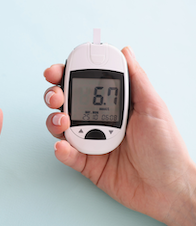Remote Patient Monitoring


Introduction
To enhance the ability of clinicians to provide emergent and critical care to patients in home/community, field and austere settings, we have teamed with eMedical Sentry, LLC in the development of a “home” remote patient monitoring (RPM) system initially for cardiac patients called eMedical Sentry (eMS). eMS is a wearable patient centric solution that provides tele-health RPM services to patients with chronic diseases.
Challenge
- Challenge 1...
- Challenge 2...
- Challenge 3...
Solution
We conducted a pilot study at Shady Grove Adventist Hospital in Maryland, initiated within 72 hours of hospital discharge, to evaluate the benefits of a 30-day home RPM in a high risk Congestive Heart Failure (CHF) patient population in order to reduce costly hospital readmissions. The program included daily home RPM followed by cardiac rehabilitation therapy after the 30-day cycle to reduce the hospital readmission rate. Upon discharge, each patient was provided with a Samsung/Android tablet attached with bluetooth enabled medical devices including a blood pressure cuff, body weight scale and an O2 pulse oximeter. Real-time readings are sent to their healthcare providers via 4G Long-Term Evolution (LTE) connectivity. LTE is used as many cardiac patients do not have Internet connectivity in their homes.
One-hundred-twenty-three (123) inpatients were screened from Shady Grove based on their previous or newly diagnosed history of CHF, and their eligibility based on pre-specified inclusion and exclusion criteria. Within the patients screened, eighty-six (n=86), including Class II to IV CHF patients, were selected. Using bluetooth wearable devices, daily vital signs were received. In some instances, fasting and random blood sugars were monitored for patients with Type 2 Diabetes mellitus and those with difficulties controlling hyperglycemia.
Real-time data was collected using the fully integrated CHF eMS application, and reviewed by a Registered Nurse (RN)/Physician Assistant (PA) who assessed each patient weekly and coordinated with the CHF physician over the course of a 15 month period. Upon successful completion of the CHF program patients were assessed for other heart failure (HF) therapies that would improve symptoms including Cardiac Rehabilitation and Enhanced External Counter-pulsation (EECP) therapy.
The EMS Ecosystem: The eMedical Sentry ecosystem is currently transitioning to an industry and Department of Defense (DoD) approved cloud service while ensuring compliance with HIPAA, NIST and DHA standards.
Real-time patient data collection is performed at the point of measurement using Bluetooth enabled devices attached to a wearable watch (Samsung-Tizen) or tablet (Android). In addition to the wearable devices, the footprint consists of a Software as a Service (SAAS) clinical portal that can be stand alone or integrated into other healthcare systems using Application Program Interfaces (APIs). The portal is further extended to a mobile web application for quick read-only monitoring. eMedical Sentry automatically monitors incoming data based on predefined business rules that include the expected date/time of reading, frequency and accuracy. Based on the rules for each reading, healthcare providers can set and adjust low/high threshold alerts that enables immediate alert notifications via email or cell phone text messages followed by an automatic response of pre-condition questions submitted to the patient instead of requiring additional resources to make phone calls.
Our turnkey solution is designed to be scalable, secure, interoperable and visually manageable meeting the needs of any pre-deployment medical readiness condition as well as the promotion of overall good health. Based on budget constraints, limited healthcare resources and expanding operational missions, eMedical Sentry can reduce the medical recovery time, increase the number of patients being cared for, and in many instances, prevent future undesirable health outcomes for at-risk patients, through the combination of automated remote monitoring and patient management.
Results

The pilot study utilizing the eMedical Sentry solution demonstrated that RPM within a Heart Failure Clinic setting can be successfully implemented in ambulatory HF patients and may reduce readmission rates.
The 86 enrolled patients concluded with 69 patients (85%) completing the program and twelve (12) patients who did not (15%). Participants in the RM program (n = 86 total enrollees) had a lower all cause per person readmission rate of six (6%), a total of five (5) patients, compared to the national 30-day readmission rate of approximately 24%. This difference was statistically significant. A total of 41 patients were enrolled in Cardiac Rehab (51%) after completing thirty days of remote monitoring.
Application to Military Operational Medicine: We strongly believe the eMedical Sentry PRM turnkey solution can greatly contribute to a “most ready force” by extending the continuum of military healthcare to the “home” environment (house, apartment, ship, barracks, field).
As demonstrated successfully in the pilot study, RPM can be achieved by leveraging real- time wearable technologies, supported by an enriched infrastructure of clinical business intelligence, machine learning and workforce automation. Most recently our team has leveraged other technologies including the Samsung S3 watch to receive and transmit real-time data. Additionally, working with Samsung we are pursuing Electrocardiography (EKG) devices and other wearables.
Within operational military settings, there are numerous use cases that can be envisioned. For example, onboard an aircraft carrier the ship’s healthcare clinic or “sick bay” sees and manages over 5,000 shipboard personnel. Those personnel requiring routine monitoring are usually sent back to their rack (“home”) and as resources are available visited by a hospital corpsman (HM). With eMedical Sentry, the sailor could be sent back to their rack with a watch that will provide continuous remote patient monitoring while centrally managed by the clinic. Other areas of usage include monitoring patients in rural areas or actually on the battlefield. The Veteran’s Administration (VA) is currently seeking how to apply to their rural patients. Internet connectivity is also an option vice using LTE when not available.



